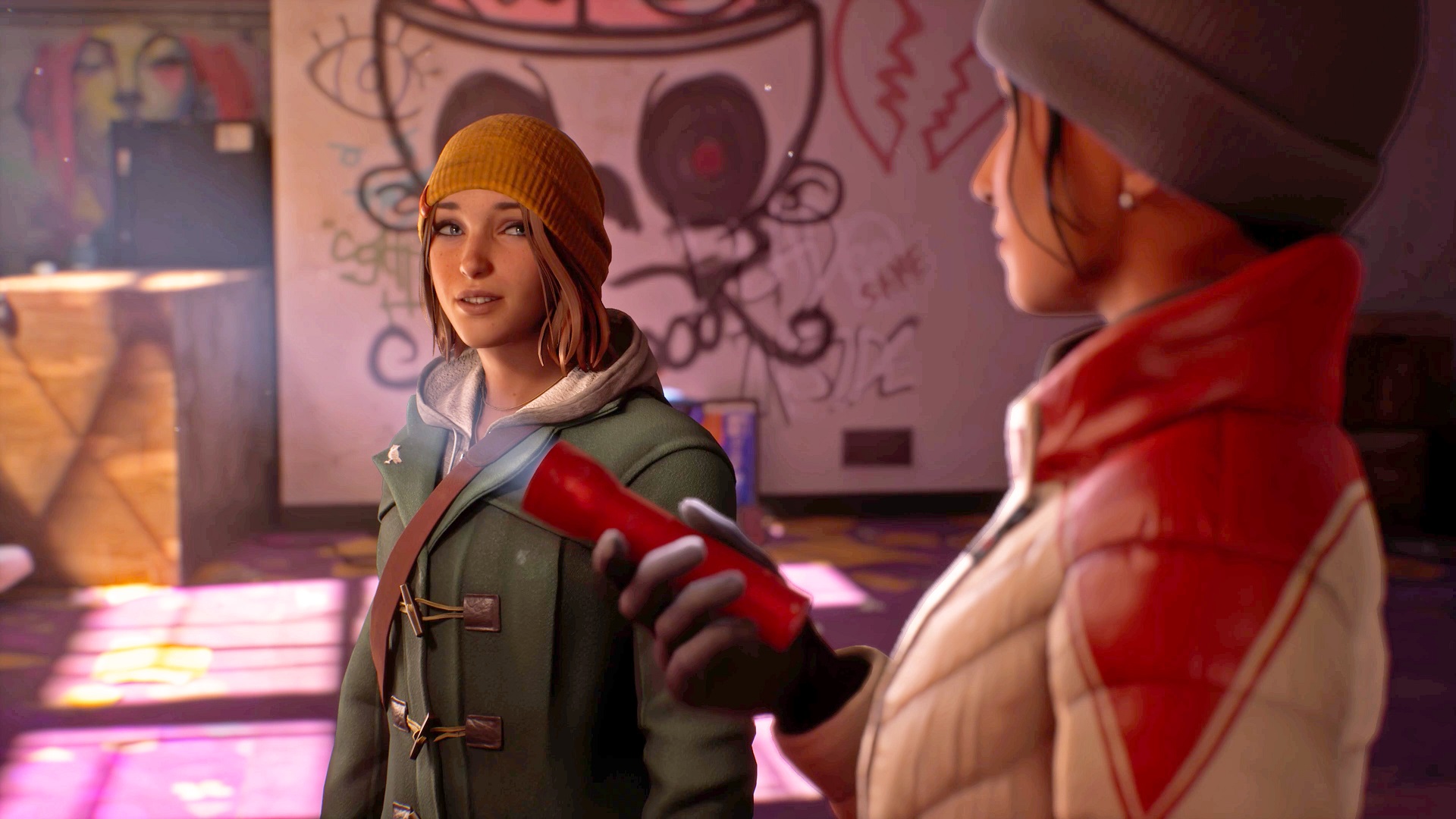
What would you do if one day you discovered you had a supernatural power? This is the question the Life is Strange series has asked and explored time and again, beginning with the first game centering on Max Caulfield as she juggled the highs and lows of adolescence with the power to rewind time. Now, Life is Strange Double Exposure revisits Max as a character for the first time (in a game, anyway) – and she might be older and wiser, but the question is more pertinent than ever. The distressing events of Arcadia Bay – that had her grappling with her own morals surrounding a murder plot, and more tragedy besides – are never far from her mind, and after seeing what the consequences can be for using or not using a supernatural ability, this question is once again put at the forefront when Max discovers her powers have changed.
As she faces another tragedy when her close friend Safi is murdered in the new setting of Caledon University, her rewind power alters. No longer able to hold down a trigger to reverse time, it now allows her to simply Shift between parallel timelines. Discovering what happened to Safi and trying to find out if there's a way to prevent it becomes the main driving force behind the story of Life is Strange Double Exposure.
While the actual Shift ability offers up a novel way to try and get to the bottom of mystery, going between different timelines often ends up producing a bit of a disconnect with the diverse cast – and I found myself really wanting to get to know them better. As a result, it took some time for me to feel really invested in the goings on at Caledon, and the game as whole feels like it really only gets going towards the latter half, acting as the set-up for something more. Ultimately, where it really shines is through its exploration of what it means to have the power that can make a difference and all of the baggage that comes with that.
If I could turn back time
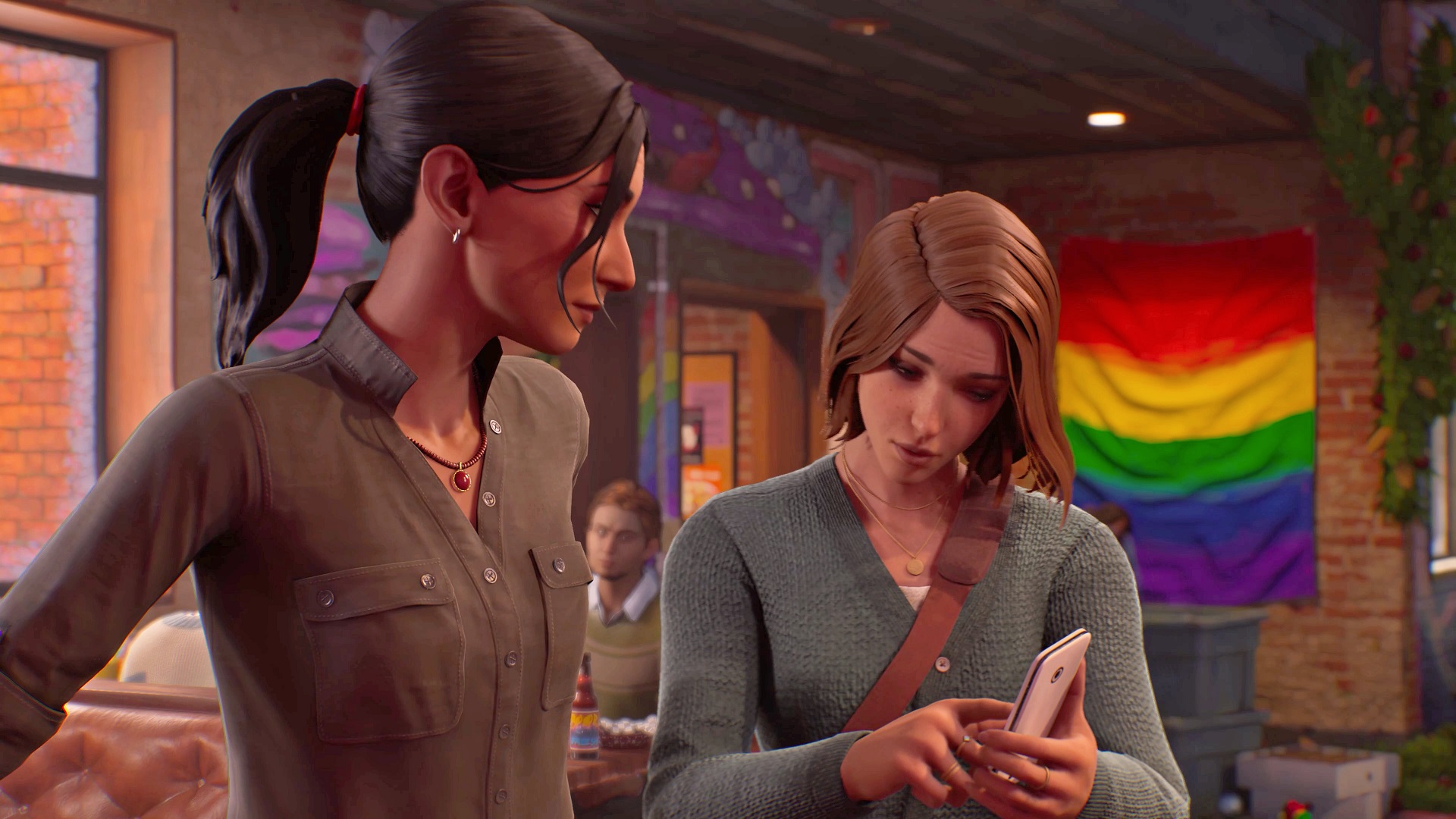
Bringing back a character like Max Caulfield is no easy task, especially when you're also trying to spin a murder mystery at the same time. Life is Strange Double Exposure not only has to try to establish her loaded past to newcomers (and square that with the versions fans played in the original game), but it also has to try to explain how she's come to Caledon, and set up her new relationships. Being drawn into the circumstances surrounding Safi's murder provides ample ground to explore these points, while also examining how Max is trying to deal with her past decisions, and how it shapes the exploration of powers throughout the story. While we might lack her powers, what uni-going teen doesn't have some regrets? It makes Max an easy character to connect with, whether you're a Life Is Strange diehard or a newcomer.
Very early on, you'll get to make choices that reflect the possible endings of the original Life is Strange. Since the story's main focus is on the murder of Safi, Max's past is initially shown through newspaper clippings, photos, her journal, a few brief flashbacks, and conversations with others. But as the story progresses, Deck Nine brings Max's past back to the surface through the way it's affected and changed her relationship with her previous rewind power. It's clear that she's still troubled by the consequences having such an ability can cause, which partly factors into why the power changes, as though it's adapted to suit her needs in this scenario. It makes sense to me that she would be more cautious or apprehensive about the new ability she has, and how she should wield it. It's handled well, becoming a real highlight of experiencing Max's journey and reuniting with her as a character.
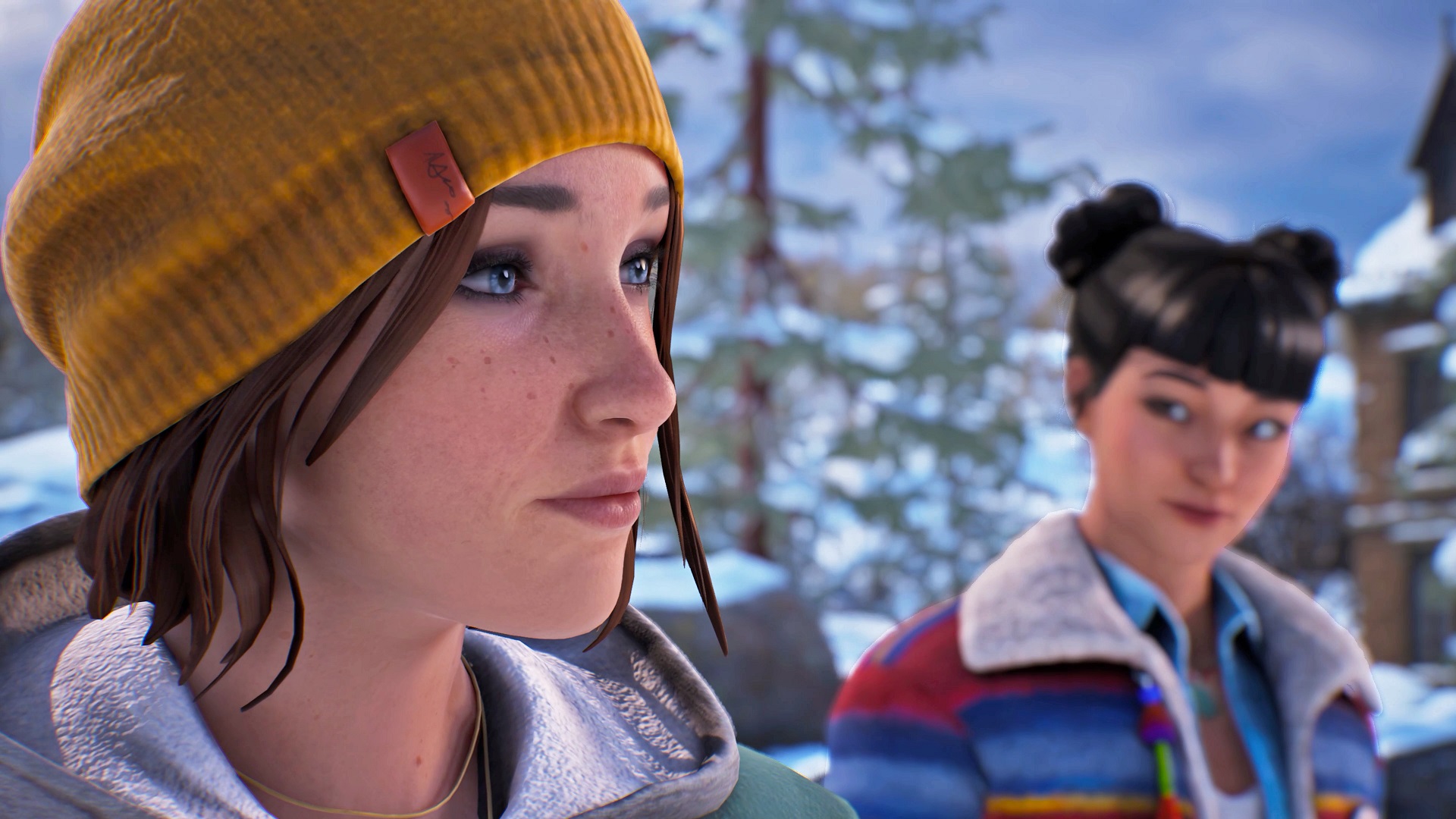
After the murder, the need to find out what happened leads Max to discover she can Shift between a timeline where Safi is dead, and another where she's still alive. Throughout the university, there are set spots where you can Shift between the two – usually hidden or obscured so no one can see you. "Living" with an orange circle, or "dead" with a blue circle written at the top of the screen will indicate which one you're in, with the color-coding also reflected in the dialog. At certain points, I did completely lose track of which timeline I was in, such as when I was flitting between them so often to try and crack my way into a locked suitcase. I even ended up saying the wrong things to certain characters because I forgot which timeline a conversation took place in.
It can get a little messy to keep track of, but it's all part of Deck Nine's way of trying to wrap you up in the mystery and test your ability to remember what happened where. However, alternating between timelines did on occasion make me care less about the choices I was making, because I'd forget what subtle consequences had happened in each. The shifting mechanic also feeds into the puzzle scenarios not unlike the Rewind power. While there are some less interesting ways you can use the timelines, such as getting a certain object from one timeline to help you in another, the Pulse ability is a highlight, allowing you to see ghostly forms of people or objects that show you what happens in the parallel timeline to the one you're in. This lets you eavesdrop on conversations, keep an eye on a character's location (a bit like Batman's Detective Vision), or follow tracks a la Geralt's senses in The Witcher 3, and I wish there were more instances I could actually put it to use within the context of the story.
With great power
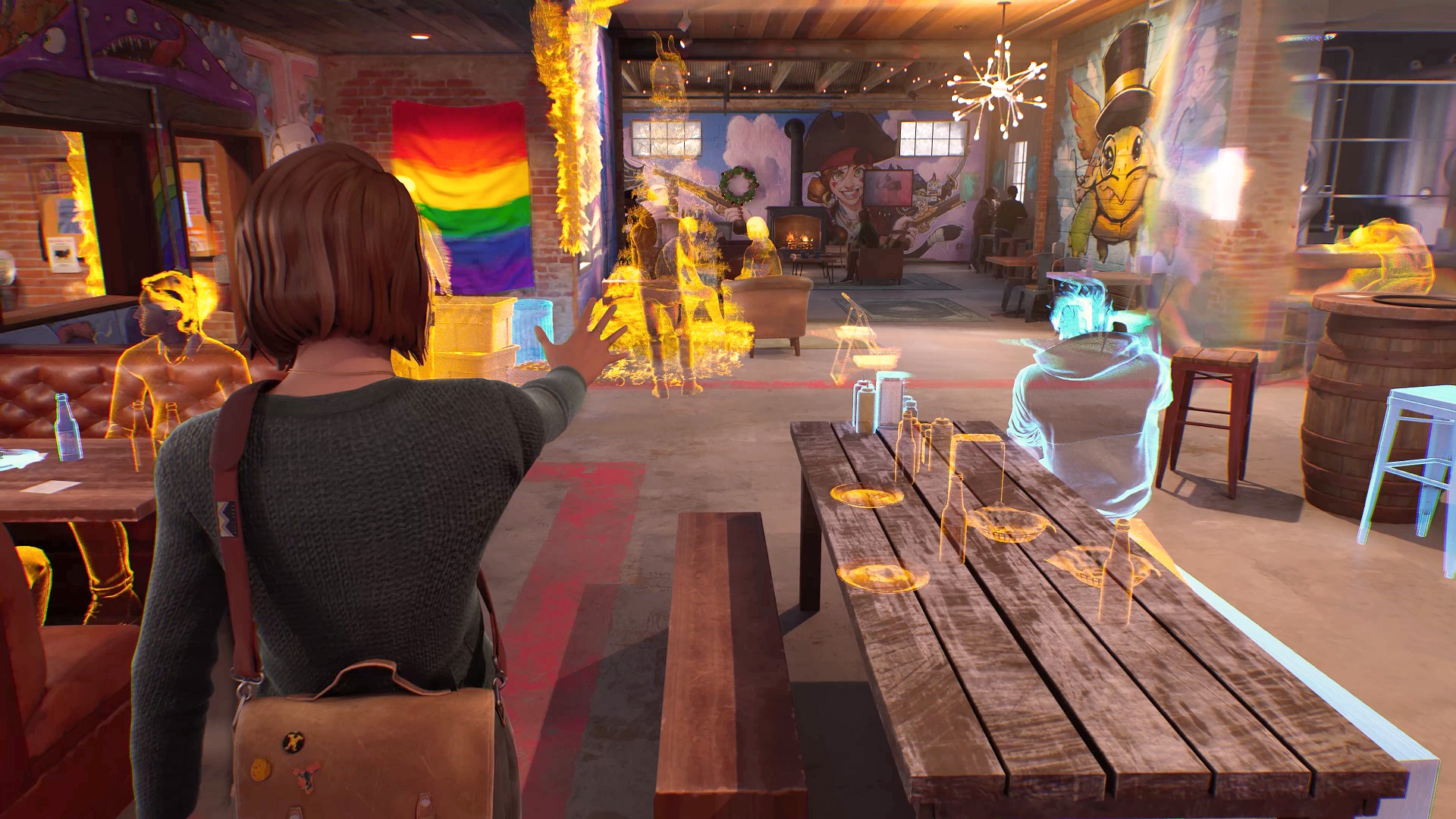
The new power works well for the most part, complementing the many twists and turns of the murder mystery you're trying to unravel. But handling two timelines means you're also getting to know the characters piece by piece in both versions of Caledon University. It all comes back to that feeling of disconnect – and I found myself wanting to spend more meaningful time with so many people Max knows outside of her investigation. One of the biggest strengths of Life is Strange Double Exposure is its diverse cast of characters that all have their own troubles. The very fact I wanted to get them better speaks volumes about how likable some of them are, but lacking the opportunity to form deeper connections with them equally speaks to the feeling of a missed opportunity. For much of the time, your focus is understandably on Safi, and it was only really towards the end of the game that I started to feel like real bonds were forming with some of Max's immediate circle.
Max's friends and acquaintances at Caledon also add to the mystery, which is another highlight of Double Exposure. While it starts out being a whodunit case, the more you learn about Safi's death, the more realize that many of those around you have secrets of their own, and Max doesn't necessarily know them as well as she thinks she does. Questions lead to more questions, and some of the unexpected developments that happen towards the latter half of the game genuinely caught me by surprise and kept me guessing.
Not unlike Life is Strange True Colors, Double Exposure's visual presentation is great, with expressive facial animations and excellent performances by the cast who breathe life into the people of Caledon University. As someone who played the original game back in 2015, seeing Max again felt like getting reacquainted with an old friend who I haven't seen in almost 10 years. Max's passion for photography even makes a welcome return, giving us many chances to take snapshots throughout.
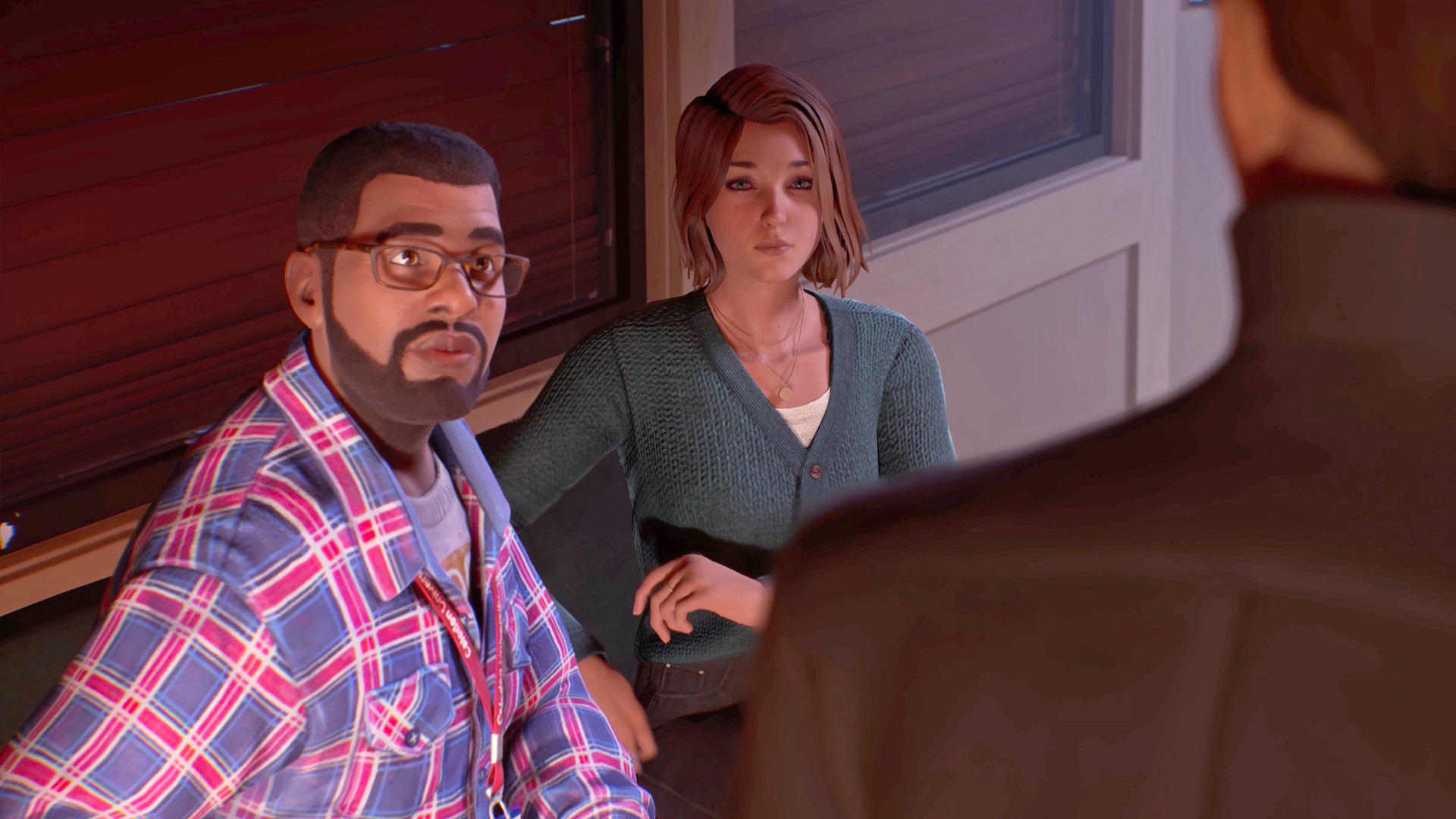
The timeline mechanic doesn't have as much impact as the original's Rewind power – which had you replay choices over and over again as you struggled to decide which decision you wanted to accept. Rather than allowing you to replay dialog branches to unfurl more about a character as you could with Rewind, shifting left me unsure where I stood with many of them at times. And yet, Life is Strange Double Exposure manages to use the parallel timelines to explore an intriguing mystery full of unexpected twists.
While the ending works well on its own, it feels like it's laying the groundwork for something bigger. In fact, without spoiling anything, it's as though the game as a whole is acting as the set-up for a wider narrative to come - it isn't a bad thing, but it sometimes feels like leaving some doors open came at the cost of making Double Exposure shine as well as it could have on its own merits. The last two chapters, in particular, are a high point and succeeded at drawing me in, delivering some memorable moments that raise some curious questions about the future of the series.
Above all, its exploration of powers left me wanting more. Fans of Life is Strange will likely get more out of the experience than those going in cold turkey, but Double Exposure is worth checking out if you're looking to get stuck into a twisty mystery - though I'd still say it's worth trying the original first. Just as those choices in Arcadia Bay made a lasting impact on me, they're still very much affecting Max, and I love the way her return continues to ask and explore that same question: what would you do if you had supernatural powers?







